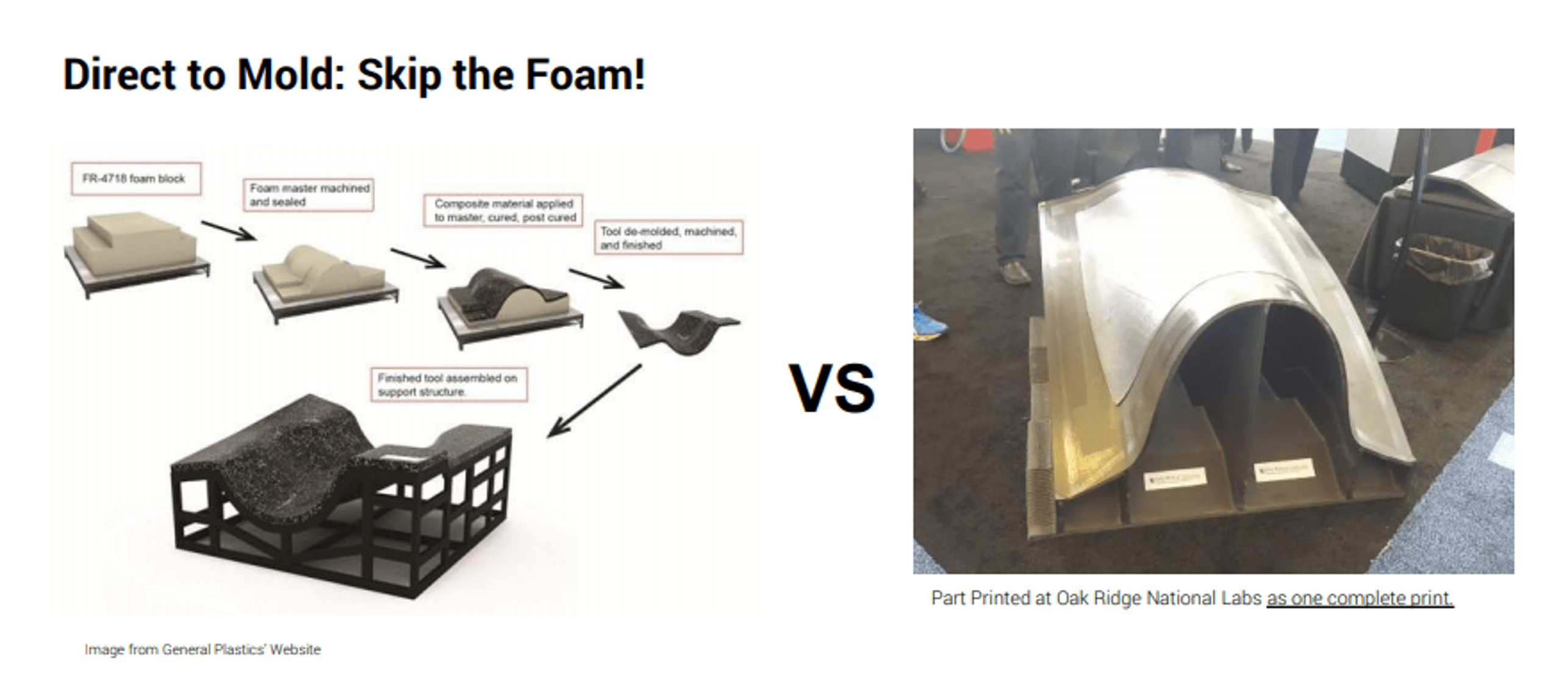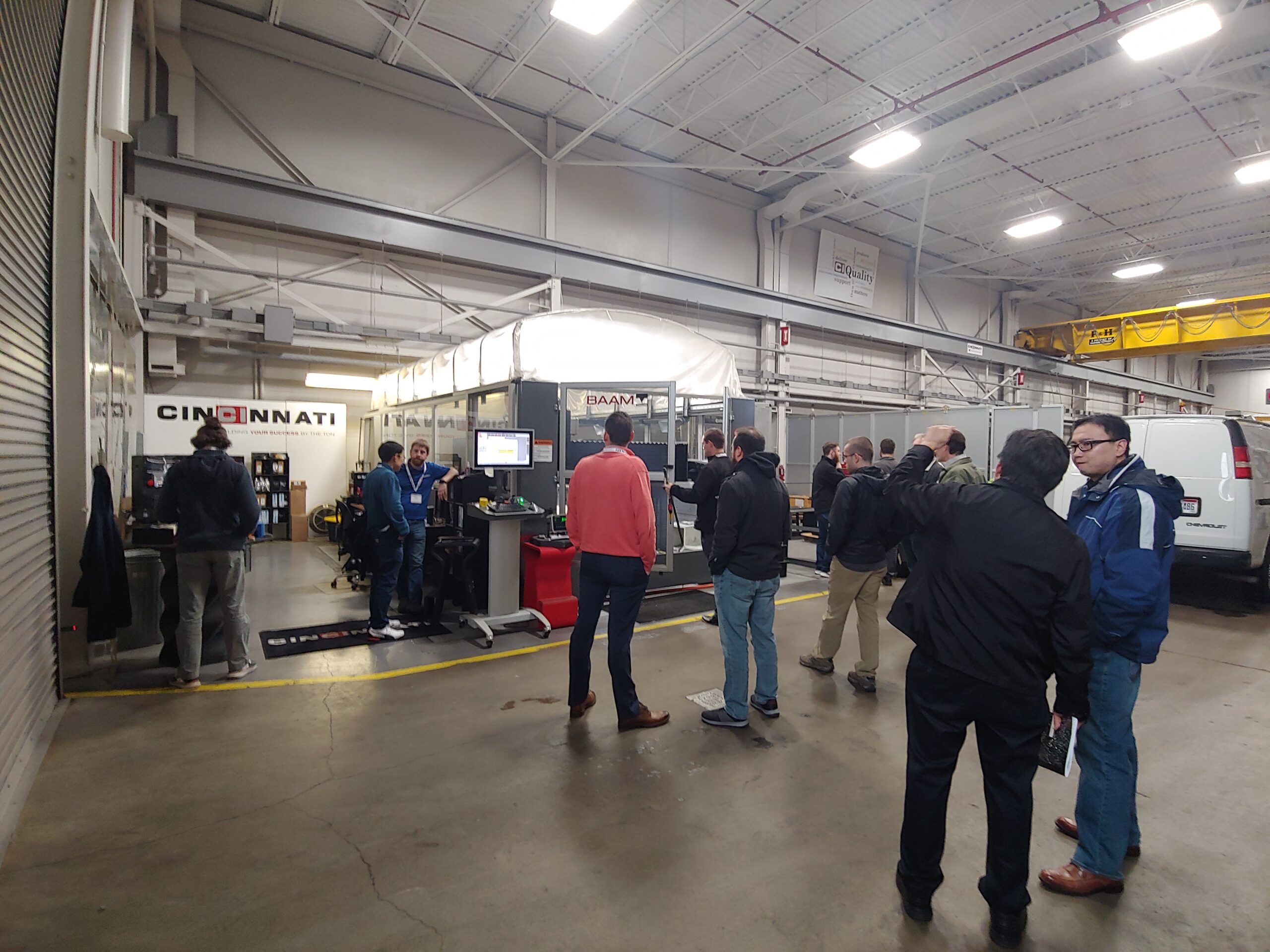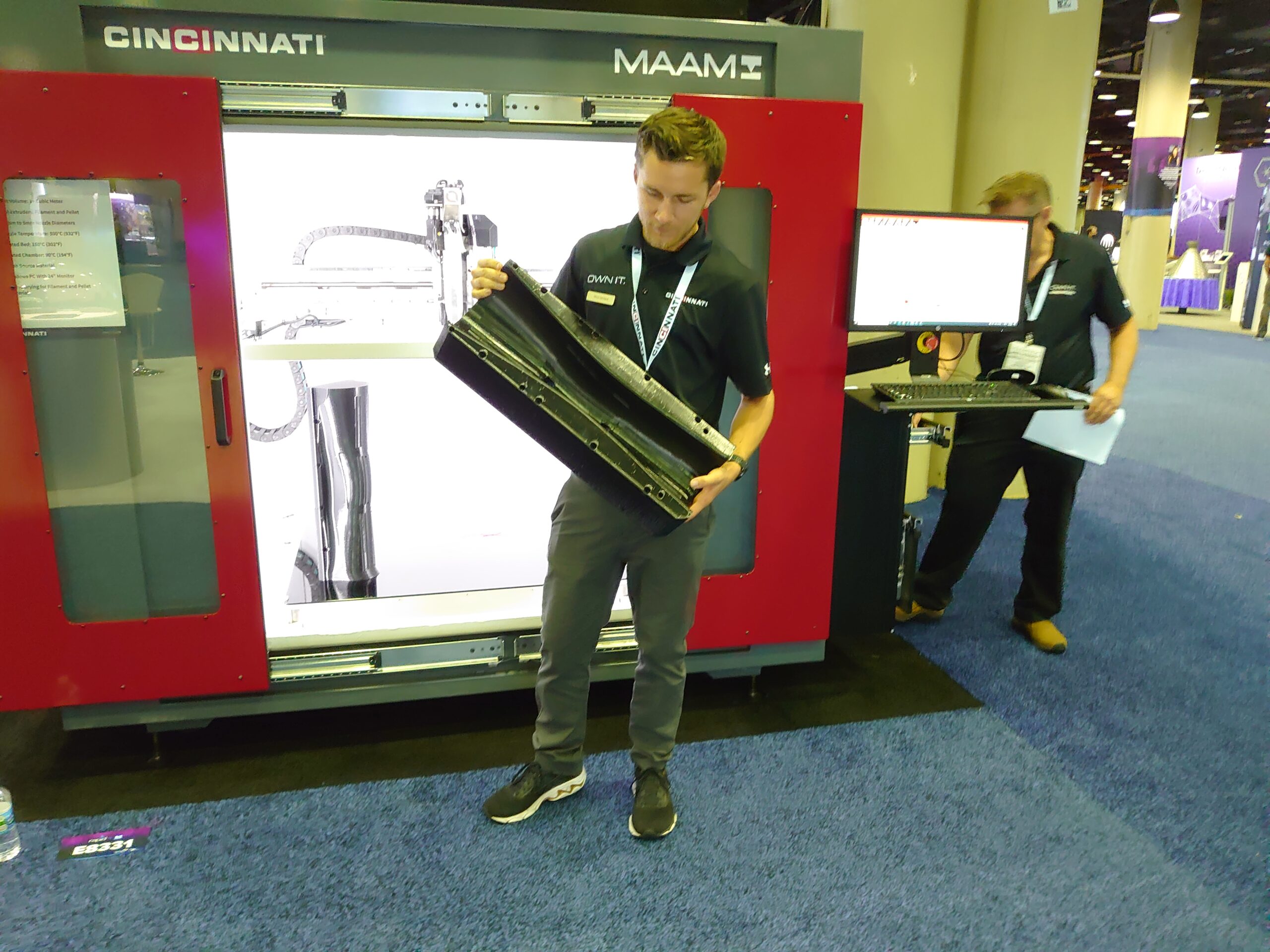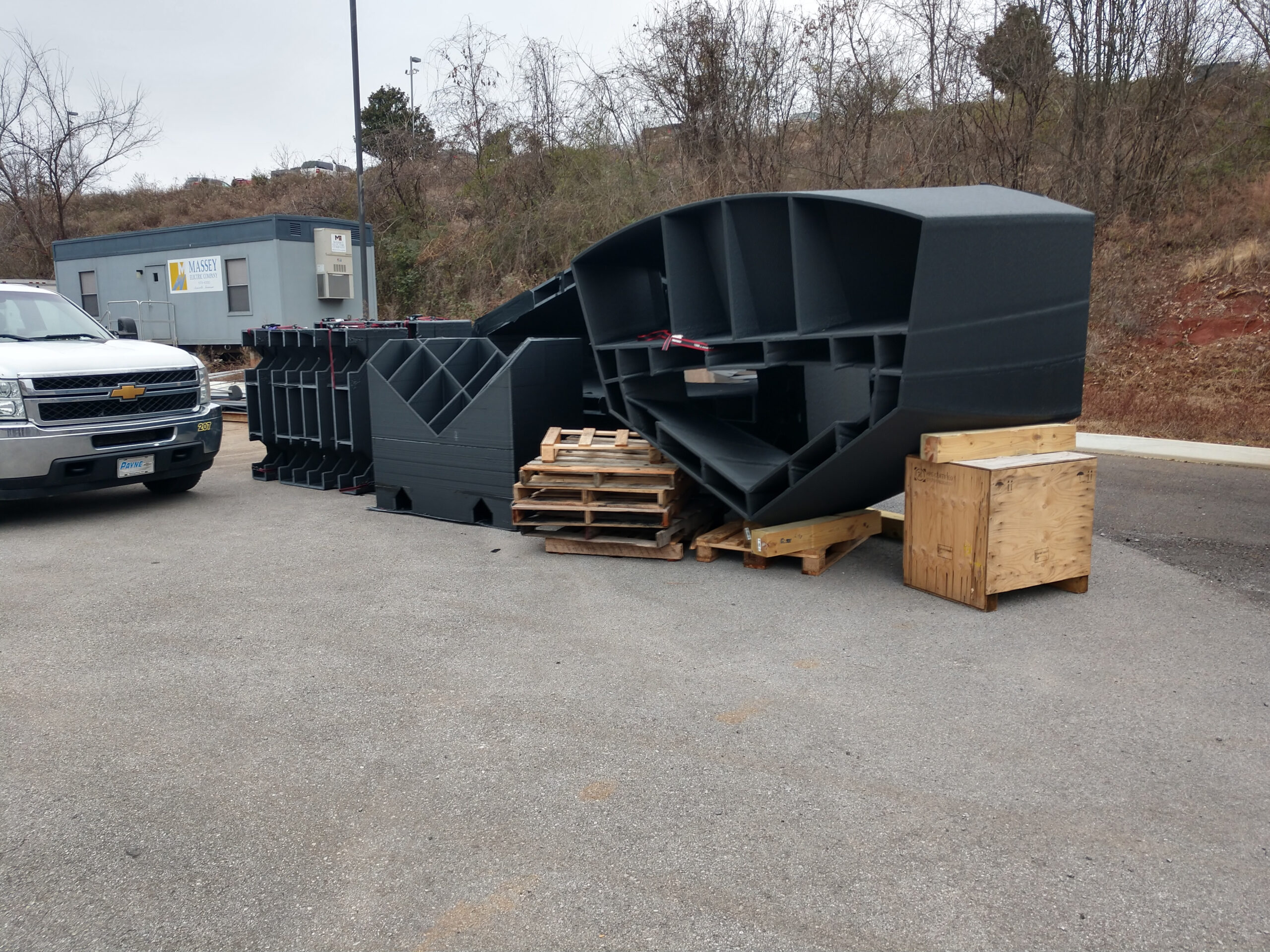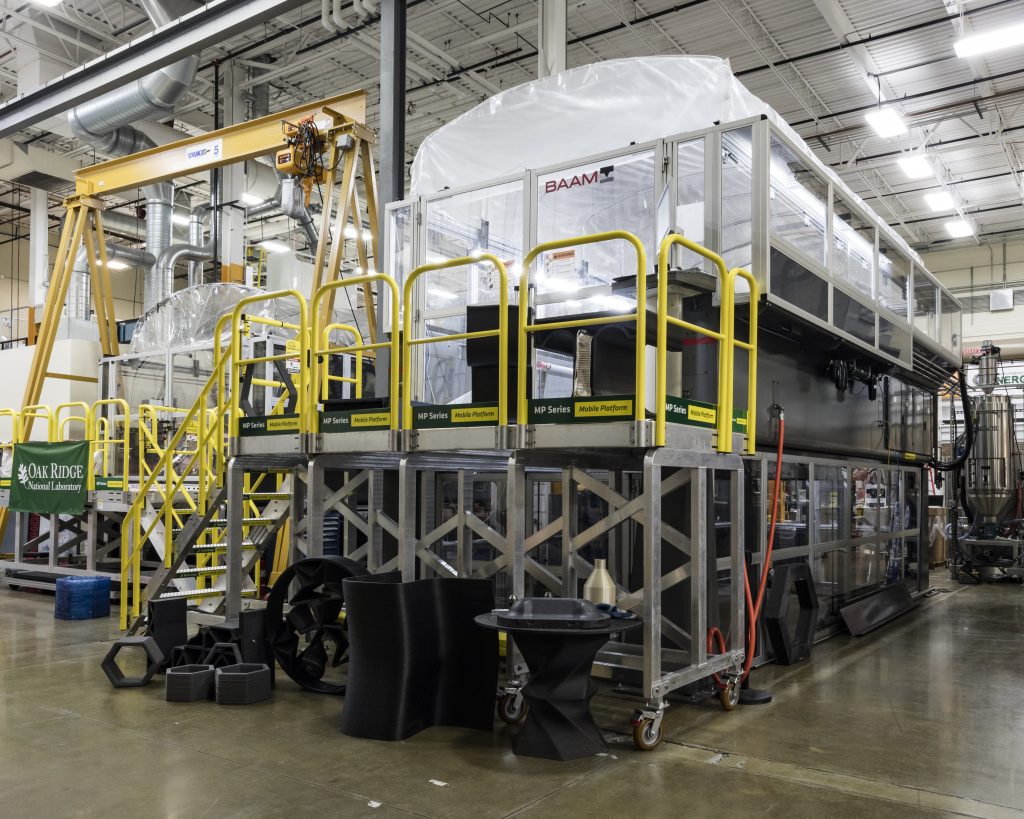What is Large Format Additive Manufacturing
Large Format Additive Manufacturing is a sect of FDM (Fused Deposition Modelling) where Granules are utilized as opposed to filament to create large near net parts rapidly. Pellets have distinct advantages in cost, deposition rates, and material flexibility. This allows for larger parts to be printed due to shorter layer times and more trapped residual heat. It also allows for more cost competitive production of Additive Parts to challenge traditional methods of manufacturing.
This technology while originally pinned for Tooling has expanded to end use parts and prototypes.
My experience in LFAM
I luckily was poached by Lisa Griffin (forever Thank you) to join Cincinnati, who acquired NVBots a company I helped part time in a few events. With Cincinnati came the SAAM (Small Area Additive Manufacturing) and BAAM (Big Area Additive Manufacturing. The BAAM was a first of its kind printer in LFAM and was created through an idea Lockheed Martin had, that was realized through Oak Ridge National Lab (ORNL) and Cincinnati as a partner having a large Laser Gantry. The idea was to print large near net shapes and then do a final processing (machine) and potentially coat to address three key markets per Lonnie Love "A) Tooling B) Tooling C) Tooling." due to being an early adopter, many of the critical projects involved in growing large format additive manufacturing I was either involved with or a very close spectator.
What should you know about LFAM?
The first thing to consider is that you are extruding out of a single screw extruder. This typically has multiple melt zones as it is metered and deposited during the printing process. The screw continues to turn during the process, this means the retractions of a filament-based extruder do not exist.
So here is a list of some things you need to consider:
- Designing with wall and layer thickness in mind: Having a 5mm bead for example, this must be a consideration.
- Designing with fork points integrated - Some parts may be too big to pickup
- Design for machining, if this strategy is adopted you want the machining toolpath to be mid-bead, so oversize
- Layer times, heat can help increase layer times, but you want to maintain consistent layer times if possible and keep them under a certain number of minutes. Having a heated chamber such as the Compound Dynamics machine can greatly increase these times, especially with a material such as ABS where the chamber temperature is near the Heat Deflection Temperature (HDT).
- Composite Materials allow for greater dimensional tolerances (ex: Carbon Fiber)
- Motor Torque - Engineering grade materials typically require greater forces to extrude, while some machines may be thermally capable it may not be practical
LFAM Tooling Applications
LFAM can be utilized to skip the pattern to plug and go direct to mold. For it to be financially feasible it must fit certain criteria of both the features of the tool and the materials you would normally utilize to create the tool.
If you fit within this sweet spot, it may be a good technology to drastically reduce time and reduce cost.

